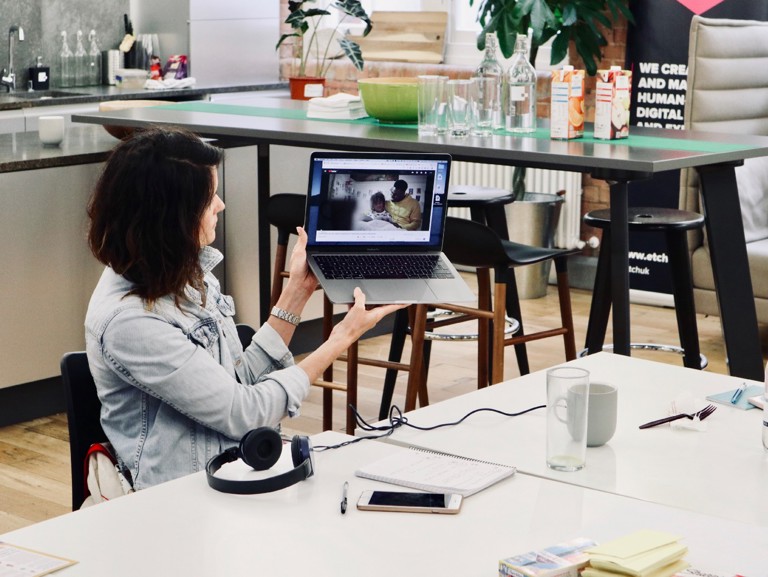Save the Children UK
Using our Design Thinking model, how could we support parents to build their children’s language and communication skills?
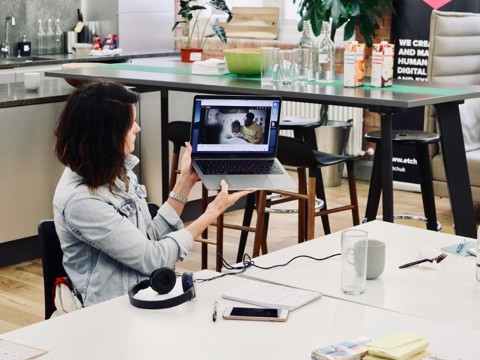
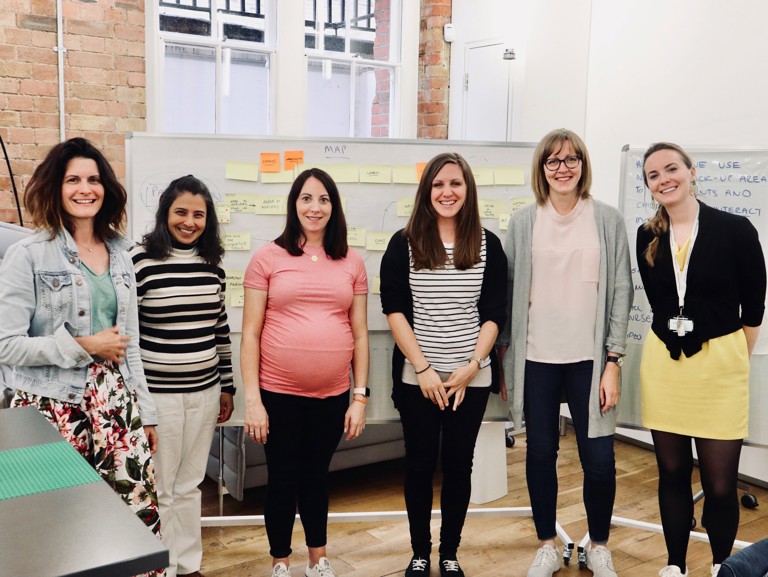
The challenge
“How might we use the nursery pickup areas to get parents and children to interact more on their way home?”
The Innovation Team brought Etch on board to train and coach the team as they embarked on their first design thinking activity.
Setting the goal
We began by identifying the outcomes we wanted to achieve through this initiative with the nurseries. Engaging with staff from Children’s Places, we discussed the challenges that nurseries face in supporting parents to play a more active role in developing their children’s language abilities. We highlighted issues such as:
- The need to build parents’ confidence in their abilities to play an active role in their children’s development
- Demonstrating what parents can do to enhance their children’s language development, but also the importance of explaining why these actions are important for their children’s brain development
- Providing parents with simple, fun and easy activities to do with their children
- Ensuring nurseries can build the activities into their regular routines
Since our primary ‘customer’ for this project was the nursery, we focused on the following long term goal:
In two year’s time, nurseries will implement tools to support parents to positively interact with their children in order to encourage their early language development.
The solution
We created a map of the parent’s journey through the process of picking up their child from nursery. The map enabled us to identify the key challenges that parents face in engaging in conversations with their children and the opportunities to create meaning moments of engagement.
We then looked for design inspiration by examining existing solutions that successfully create positive verbal engagement between parents and children. We presented these existing solutions during our ‘Lightning Demos’.
We then used this inspiration to create several potential solutions to our design challenge — known as ‘Solution Sketches’. We spent time reviewing and voting on the great concept solutions and made decisions on which ideas and concepts we wanted to experiment with to solve our challenge. Once we made our decision, we created a detailed storyboard for the prototype.
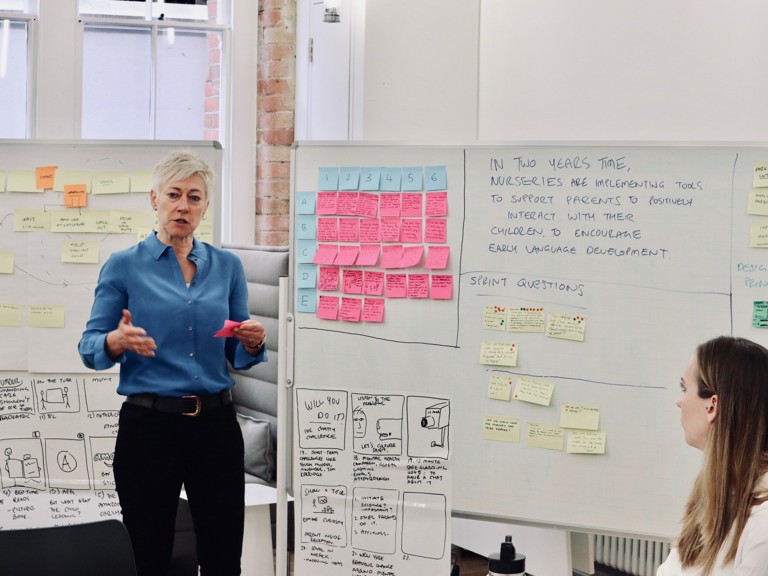
Prototyping
We then created mid-fidelity prototypes in only one day and planned out the interviews for the next day’s test with parents at a Nursery in Lambeth, London UK. We produced three prototypes.
Prototype 1: A series of banners with messaging on effective ways parents can support their children’s language development. The objective of the banners was to raise parents’ awareness of techniques that can promote their children’s language development through a role modelling approach. The banners utilised characters associated with the 8 child wellbeing indicators introduced by the Scottish Government to role model behaviours. The team aimed to place the banners on the two pathways that lead to the nursery entrance as an inspiring nudge for parents to adopt the positive behaviours with their children on their journey to and from nursery.
Prototype 2: A series of activity boards aimed at encouraging interaction between parents and children within the nursery environment. These included:
- Activity 1) Naming exercise — naming the objects appearing on the activity board
- Activity 2) Emotions exercise — talking about how the child is feeling today
- Activity 3) Texture exercise — encouraging talk about the texture of different objects
The team aimed to put the activity boards where families waited to drop off and pick up their children, to encourage interaction between the parent and child at these times.
Prototype 3: A take home activity consisting of a letter that children give to their parents at pick-up time. The letter is framed in the child’s voice and contains an activity for the parent and child to do together on the way home.
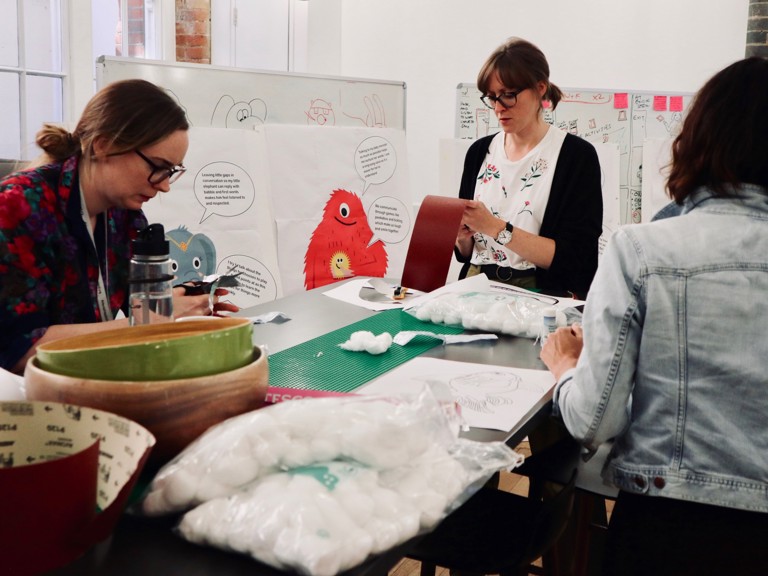
The deadline
Our user test involved going to a nursery school at pick-up and drop-off times. We observed how parents and children engaged with the prototypes and interviewed five parents and one nursery practitioner to gather more feedback on how the prototypes could be improved.
Note: We couldn’t include photos of children interacting with our concepts due to safeguarding— so here’s what the activity posters looked like at the start of user testing day.
Outcome
Parents and children were excited by the new activities in the nursery environment. Parents particularly valued the take-home activity as they said they are always looking for new activities to do with their children. The activities were successful in sparking conversations between parents and children while in the nursery environment but more work was needed to understand whether these conversations were continued outside the nursery environment. The feedback received from parents enabled the Save the Children Innovation Team to learn what parents respond to and how to elicit that response.
With these outcomes, we worked in the feedback and ran an Iteration Sprint. The iterated solution is now being implemented in two nurseries in Scotland, UK.
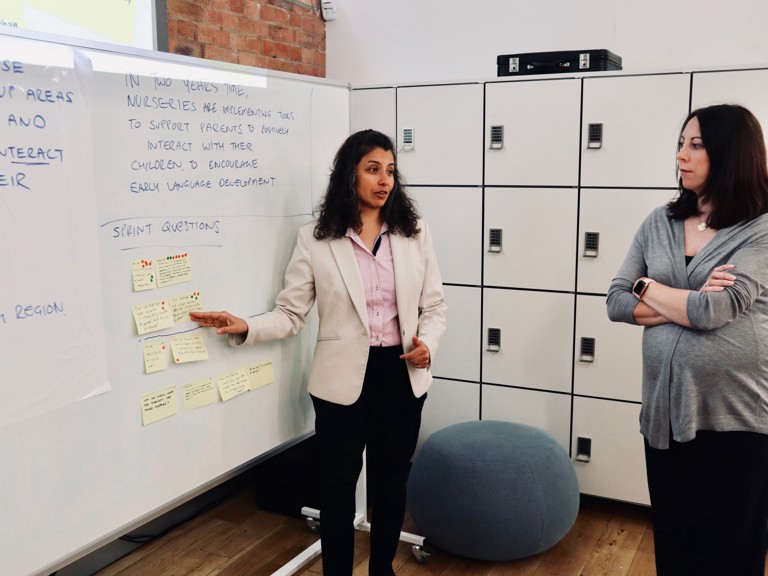
Reflection
The Design Sprint method has enabled the Innovation Team to design and test new concepts for boosting children’s early learning in just five days. The team has learned a great deal about how to make key decisions rapidly and validated and invalidated ideas with user feedback before investing heavily into concepts to put into production later.
